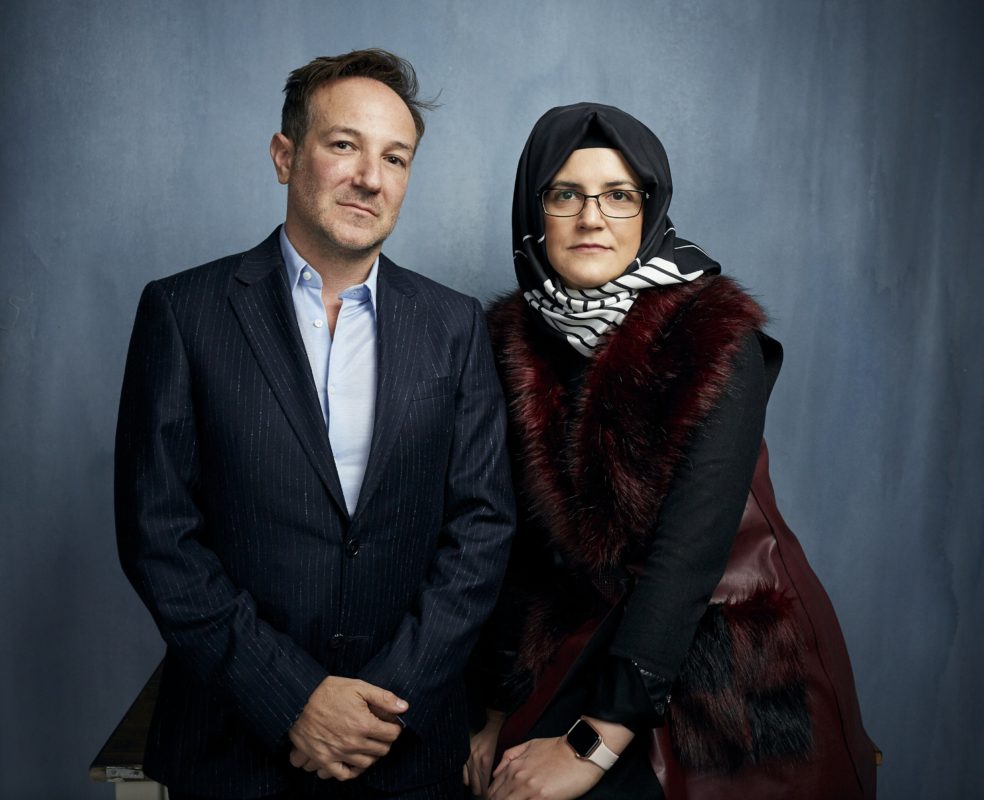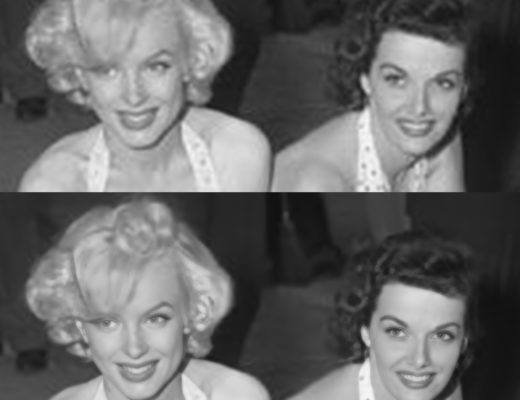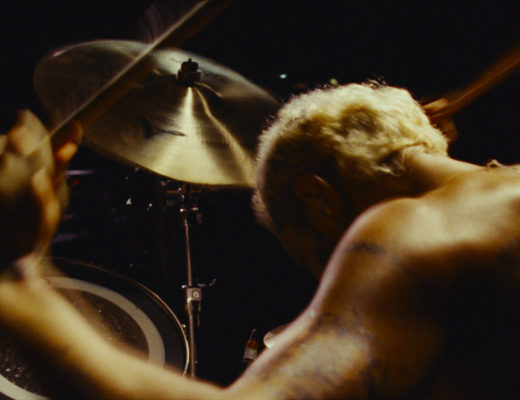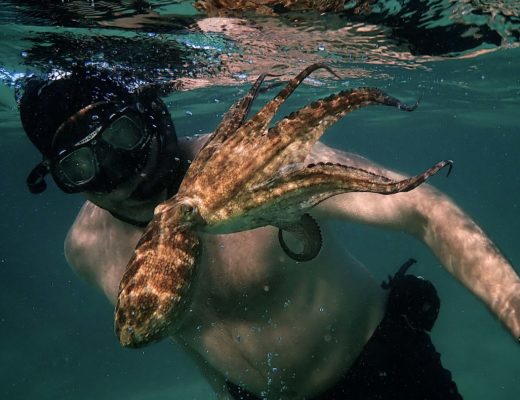Today, we’re talking with the ACE EDDIE-nominated editing team of The Dissident. The documentary uncovers the shocking facts of the murder of Washington Post journalist Jamal Khashoggi by the orders of the Saudi Crown Prince.
Scott D. Hanson has worked on several narrative features, like Coming 2 America and Dolemite is my Name. His documentary credits include Food Evolution and McMillions among others.
James Leche previously worked on Gilbert, The Devil We Know and the TV doc series Heaven’s Gate: The Cult of Cults, and more.
Wyatt Rogowski among his filmography are Fire on the Hill, Sweet Micky for President, and the TV series The American West.
Avner Shiloah a partial list of Avner’s work includes VH-Yes, The LA Riots 25 Years Later, and the TV series Gangsters: America’s Most Evil.
This interview is available as a podcast.
Hullfish: It’s a pleasure to meet all of you. I watched the documentary. How similar is the structure to the script? Or was there a script? How scripted was it? And then how did things evolve as you edited?
LECHE: So there’s Brian, the director, and Mark Monroe, who was the writer of the film. And before I came on, they had this collaboration between the two of them, where they put together an outline of what they’re looking for beat by beat. And they’ve got the interviews that they’d shot and the transcripts from those. And then it’s just sort of at the beginning of a rough outline of here’s where we want to start, here’s where we want to go, and we play as the editors. We thought, “Do what you think would work?” ‘Cause they’re not married to anything. No one’s really got a big ego about it. Then we build the things out and then we reassess. As we’re going along, Mark will literally write a script up of everything that’s going on. So it’s easier on paper for him to edit it, cut lines, and stuff like that. But that’s kinda how it worked and it just grows from there until we get a full cut and then we start moving things around.
HULLFISH: Many documentaries don’t start in a completely linear fashion. This one starts with a main character who you don’t even know as a main character. It’s Omar in a hotel room. So, how did that decision happen of “Let’s start with this guy that knew Jamal, instead of with the events or with Jamal was a young child?”
LECHE: Omar was our big surprise, sort of our big reveal of his connection with Jamal. And no one in the world really knew who he was or what his connection to the case was. And so there was something pretty intriguing about him and the fact that you’re doing a movie about a murder that happened in Istanbul about a Saudi writer and you’re starting in Montreal. You always want to keep people guessing what is this, what’s going on right now? And I remember the first day that I saw the footage of him on the phone there in the opening scene we had this guy, Ibrahim, he translated the actual phone call and we thought, “Whoa, this is an intense phone call.” And it just felt like an interesting way to start the movie.
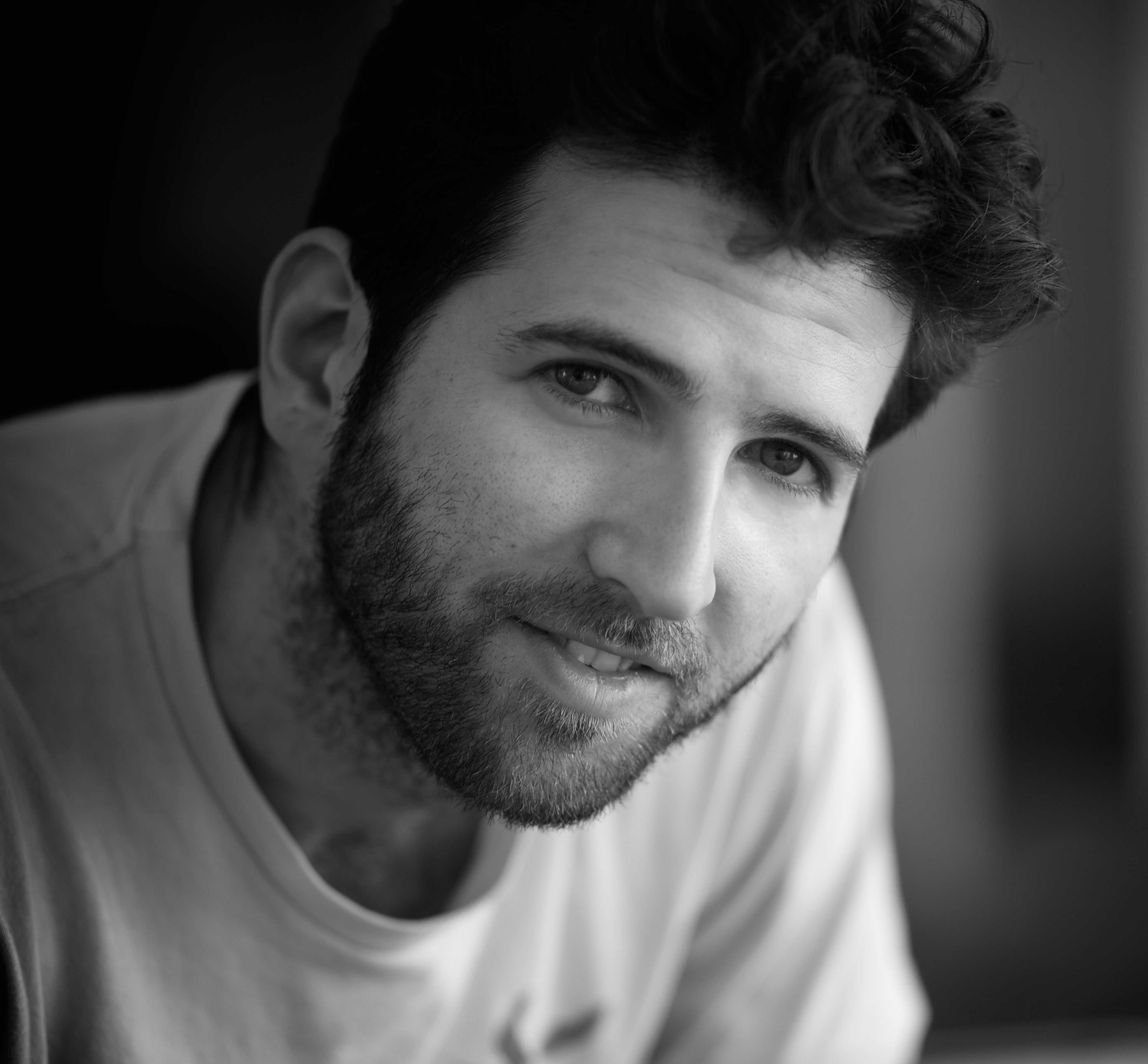
SHILOAH: With any documentary -doubly so when you’re dealing with someone who has passed away – there is a challenge in having a character to draw you in because we try to do our best with Jamal but at the end of the day, we’re relying on archived footage, and I think for any story to work you really want characters that you can cling to. And so Omar was one of those linchpins for us, someone who you can follow in real-time as he experiences things. And another one was Hatice who is Jamal’s fiance. And so those were the three main characters of the film, but it really is important to create that connection with the viewer and to draw them into the story in an emotional way. So there is the intellectual underpinning under everything which is this is relevant to the story we’re telling and it’s intriguing and it’s suspenseful, but it also just seemed like a very immediate, visceral way to draw you into the story.
HULLFISH: One of the other things that’s similar to that, that I really loved, was one of the first times that you meet Jamal is that interview where the cat jumps into his lap. It’s important, right, that you care about this guy and like him. You instantly set up: we like him. He’s a really sweet guy. There’s a lot of discussion about his smile, right?
HANSON: Well, I guess I would say it was less feeling like we’ve got to make people like Jamal because it’s important for storytelling; it’s more like Jamal is very likable. It’s just who he is. That piece of outtake footage, our archival research team found a snippet of it early on, and we had it in as a placeholder for something more like this. And then they eventually found more of that source footage so that we can have that whole conversation about he’s talking about his father or his family and then the cat jumps in his lap. And that’s just an opportunity that presents itself. Whereas in a scripted piece you might think, “Okay, what can he do to be endearing, save the cat, et cetera… literally.” This is much less a case of not designing it, but leaning into, “Okay, this is a part of him that’s not in all of the news coverage, that’s not in all of the stories and in the known elements of this story.” ‘Cause it was a worldwide story. It was well-known. And a chance to get to know him as a person, any opportunity to do that, which I think goes to getting to know Hatice pays off in terms of adding layers to a story that could very easily have just been a journalistic sort of rehashing of the events but getting to know the people gives it an emotional hook, I think, that makes the film work on a much more engaging level.
HULLFISH: Yeah, I agree. There are four of you. I really loved that you guys took the opportunity to make the film as cinematic as possible. Obviously, there’s a ton of news footage and it never looks that great, but the film really feels very cinematic. How did you guys choose who got to use what? Were you thinking, “No! That’s my shot I need it in MY segment.”
SHILOAH: A lot of fighting.
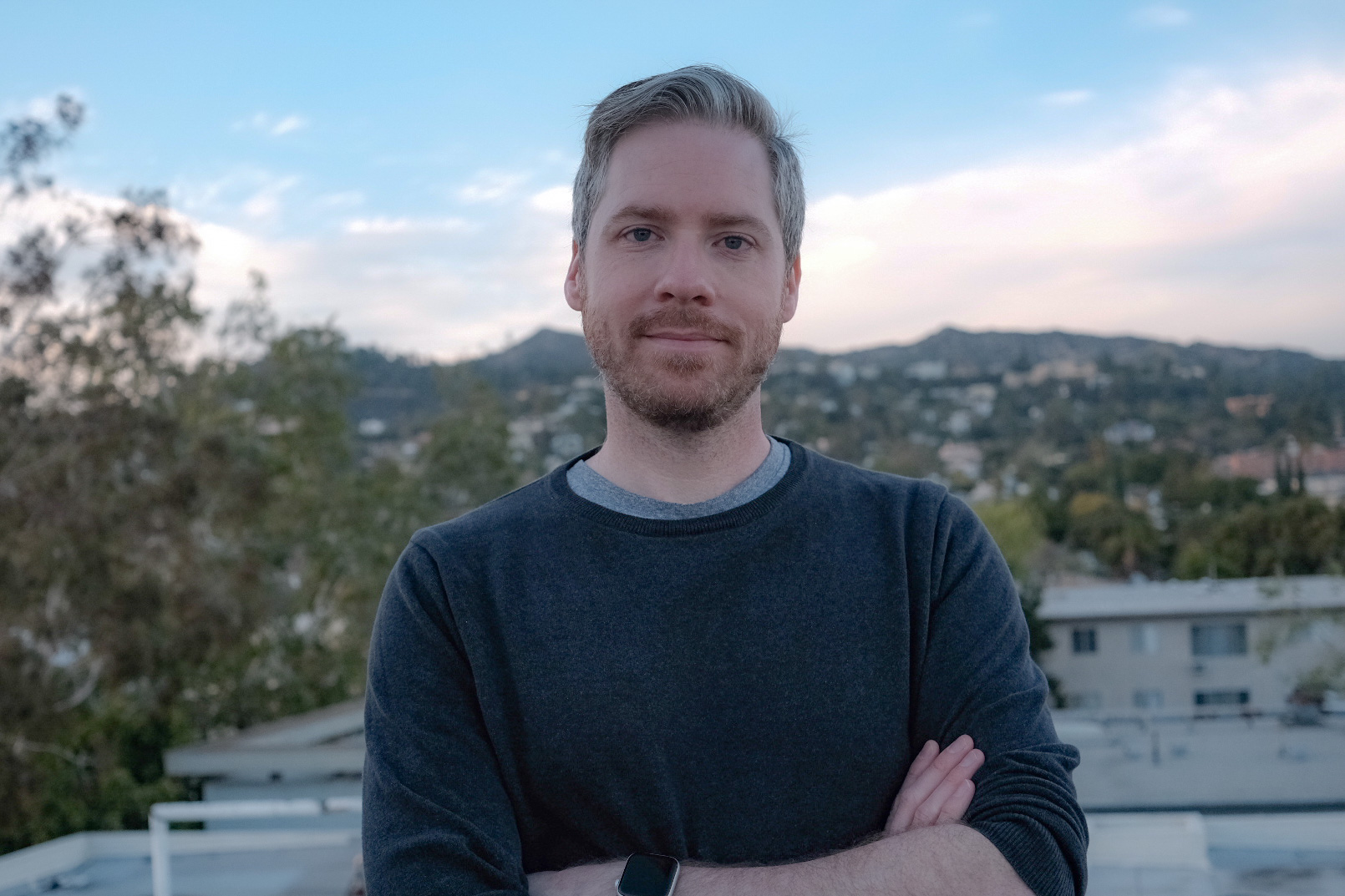
LECHE: A lot of bird shots. This is why I think it evolved over time. There are a lot of shots that lean to certain scenes. Let’s say when the shots of Hatice kind of walking through the forest, and it was used a couple of times throughout the film at one point. And basically, there was a scene that I cut where I had a few flashes of Jamal and Hatice together in that forest. And so it was, “I guess this is probably the best use of that footage to place it in there juxtaposing the two of them.” And there’s a ton of just B-roll throughout of Istanbul and there’s a ton of beautiful shots of the blue mosque and everything, but we had to just split it up evenly and whoever grabbed it first or who used it best, was the winner.
SHILOAH: There wasn’t necessarily what you would think of as a division of scenes story beats, and labor in a traditional way. A lot of scenes move through a lot of different hands because, even though we would sometimes argue about certain things, it was still definitely a collaboration. It was definitely, ” check your ego at the door and let’s make the best movie possible.” So, in that sense, there wasn’t a sense of ownership of ” Oh, I really want this footage,” or “I really want that one.” If someone had a good idea to bring to the table, to bring to a scene, wanting to take a pass at it, they would tackle that. So, it’s the same approach also that to the footage in that sense. It was all a very collaborative experience. And so, whatever seemed to work for the scene was more in an objective decision rather than someone feeling ownership over it.
LECHE: Unless I wanted it. In which case it was mine.
SHILOAH: Yeah, James trumps everyone.
HULLFISH: James got the first choice. How did that happen? What does he have on you guys?
SHILOAH: He’s just intimidating.
HULLFISH: How did you guys collaborate? Were you in the same spot? Was this during COVID?
HANSON: Part of the reason there were four of us is James started… I think in May of ’19?
LECHE: ’19, yeah.
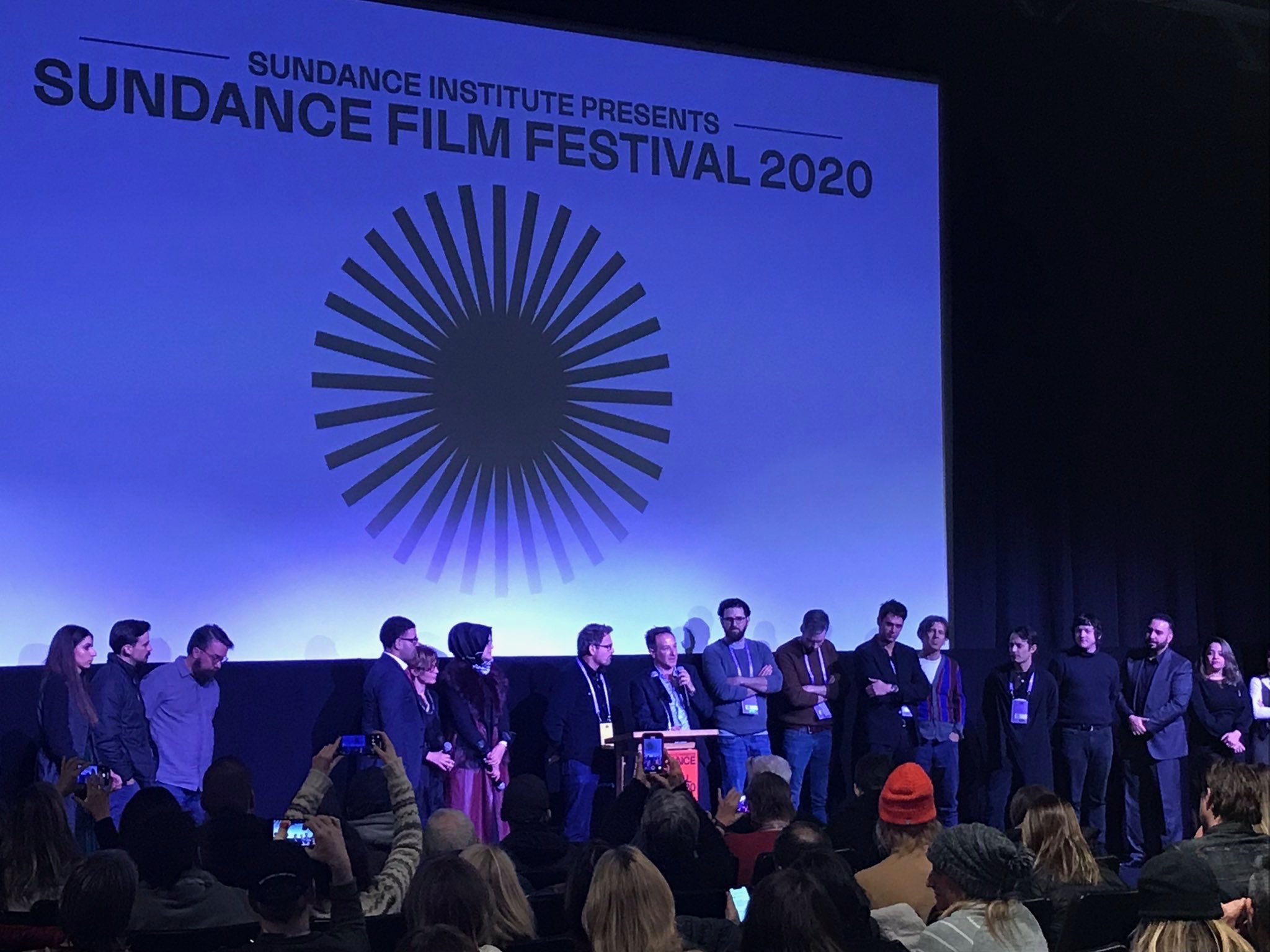 HANSON: Then Avner and I came on in June and Wyatt soon after that. Part of that was to get to a point where we had a cut in time for Sundance. So we were all in one place. Avner and I were actually in the same bay and so were Wyatt and James. And so there was a lot of shorthand passing back and forth and a lot of collaboration naturally that way. And there wasn’t time, to Avner’s point of ego, “Okay I have the first 20 minutes and that’s my baby,” or whatever. I think we all had scenes that were our favorites, but there was such a complicated story to tell and to sort out how to go about telling it between the Omar thread, the Hatice, the investigation, the news coverage of it, his other friends and colleagues… that it really was sort of like we would come together and think, “okay, in the latest cut, we’re sort of missing this. Or this goes away for a long time, or this is dragging, or this story has disappeared. How can we make this come back?” And then we would just grab it and divvy it up based on what we needed to accomplish creatively so that scenes fell in whoever’s hands were available or who was particularly knowledgeable. Wyatt handled a lot of the really technical side of explaining Pegasus and how so much of the story that takes place in the digital world that you don’t have footage of that. Wyatt really owned a lot of that. James and Avner each sort of gravitated towards different characters that they tended to spend more time with. And that helped, but everybody traded.
HANSON: Then Avner and I came on in June and Wyatt soon after that. Part of that was to get to a point where we had a cut in time for Sundance. So we were all in one place. Avner and I were actually in the same bay and so were Wyatt and James. And so there was a lot of shorthand passing back and forth and a lot of collaboration naturally that way. And there wasn’t time, to Avner’s point of ego, “Okay I have the first 20 minutes and that’s my baby,” or whatever. I think we all had scenes that were our favorites, but there was such a complicated story to tell and to sort out how to go about telling it between the Omar thread, the Hatice, the investigation, the news coverage of it, his other friends and colleagues… that it really was sort of like we would come together and think, “okay, in the latest cut, we’re sort of missing this. Or this goes away for a long time, or this is dragging, or this story has disappeared. How can we make this come back?” And then we would just grab it and divvy it up based on what we needed to accomplish creatively so that scenes fell in whoever’s hands were available or who was particularly knowledgeable. Wyatt handled a lot of the really technical side of explaining Pegasus and how so much of the story that takes place in the digital world that you don’t have footage of that. Wyatt really owned a lot of that. James and Avner each sort of gravitated towards different characters that they tended to spend more time with. And that helped, but everybody traded.
HULLFISH: Was it mostly a division of scenes or stories? How did you divide up actual work?
LECHE: I think we started with we would just take a scene or a run. There could be a couple of scenes back to back that just made sense to stick with that moment because you’re gearing up, you’re reading all the transcripts for that moment, you have firsthand knowledge. But then after we got the whole thing together, we would swap whole sequences or even reels by the time we were submitting to Sundance. I think by October everything was in a reel. So like, “you take this one. You take that one.” And then it just became a free for all.
SHILOAH: Yeah. And also, we would swap, as the other guys have said, we would swap scenes and sequences at the same time because we were all together and we were all either in the same room or next door to each other. So, one of us would invite the others to come look at a scene and give them feedback and help kind of figure out, “okay, well this is working. This is a total piece of crap. Don’t do that but do more of this.” And it was a way for us to inspire each other and develop those scenes further before we were presenting them to our director, Brian or our writer Mark. So, it was swapping as well as just note giving, but because we were all on the same page and on the same level it was more about just swapping ideas rather than taking direction from someone.
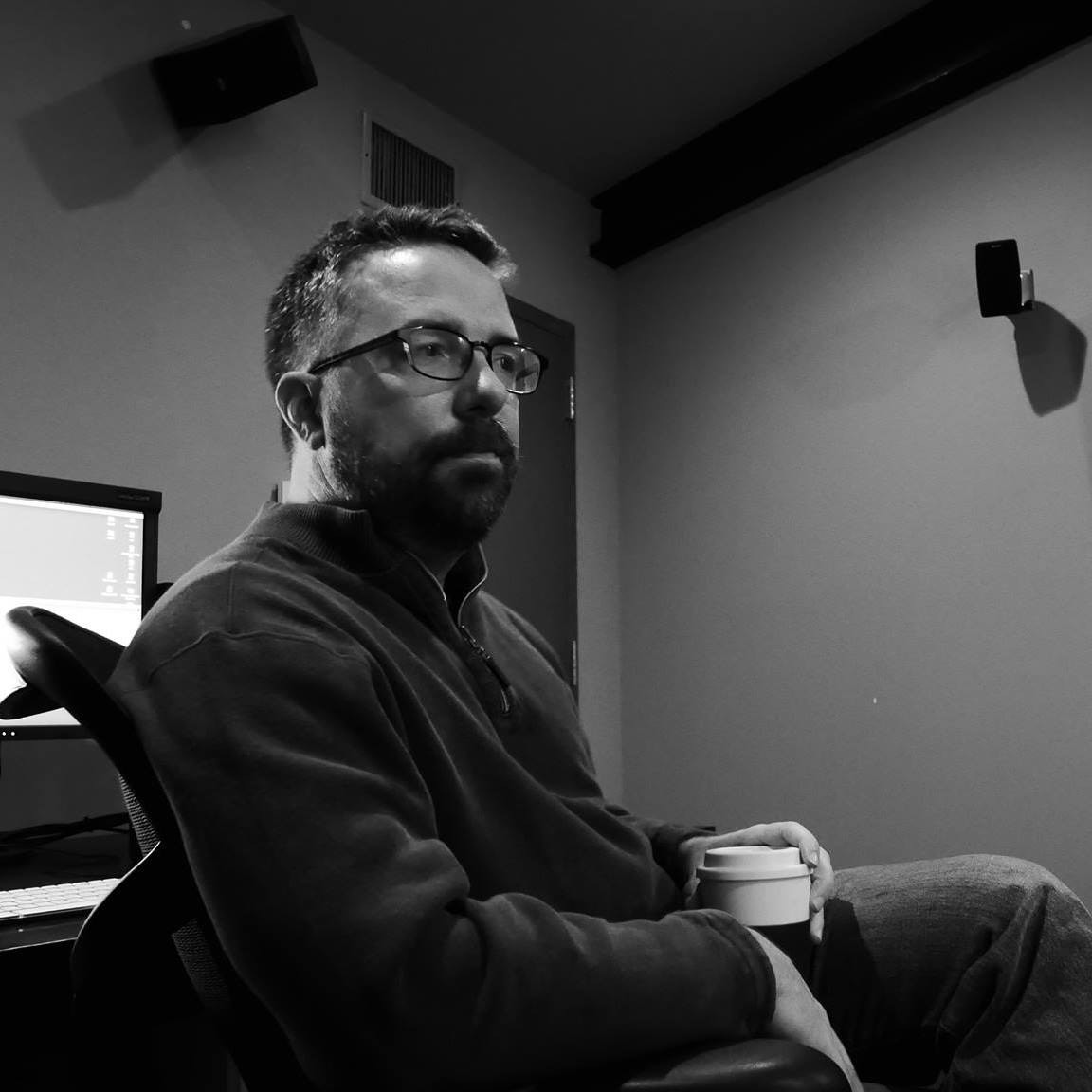
HANSON: And something about it was really helpful, I think, is that if James was working on reel three, say, and I’m working in reel five, and I go look at something that James is doing and say, “Oh, this is how you’re setting this up. And how are you addressing that in there?” Okay, that’s going to change the payoff that’s going to happen in real five for that particular storyline in that part of that sequence. And in fact, if you’re going to do it that way, there’s a bite in mind that you should maybe consider taking and putting in real three. And I’ll accommodate that in five because it’ll pay off better. So, it really was an argument for being in the same office environment together and how much, especially when you have this many hands working on it, how much more efficient that is for creative collaboration and how quickly you can evolve the idea and get to a more sophisticated approach and get away from the strictly literal linear approach. And you can find a more engaging way to tell the story because you can play it off of each other.
LECHE: we were on NEXIS. That was super helpful.
HULLFISH: How were you collaborating with the director? Was he in a lot? Or was it a producer or a writer that was dealing mostly with you guys? What was it other than the four of you collaboratively?
HANSON: Well, Brian and Mark both gave lots of feedback and were involved obviously from the beginning. Brian’s the director, it’s his movie. But documentaries are that sort of thing where you have that opportunity of, “okay, this is the intention we need to accomplish. Have at it.” And then as it got more developed and more refined Mark would act as a more specific… calling out maybe some more finer points of details of notes and revisions. And then Brian would come in to watch a run and keep a degree of distance so that he had a fresher perspective. And he really focused on tone and what this was going to be like for an audience to experience, and that emotional ride, and how that was going to feel and how they would process that.
If you get into all the weeds the whole time, you can just get inundated into that stuff, and it becomes this confusing, blubbering mess of all this verbiage. And you don’t know what’s really happening. And he definitely kept us headed towards a consistent audience experience that matched what he wanted to get across about story.
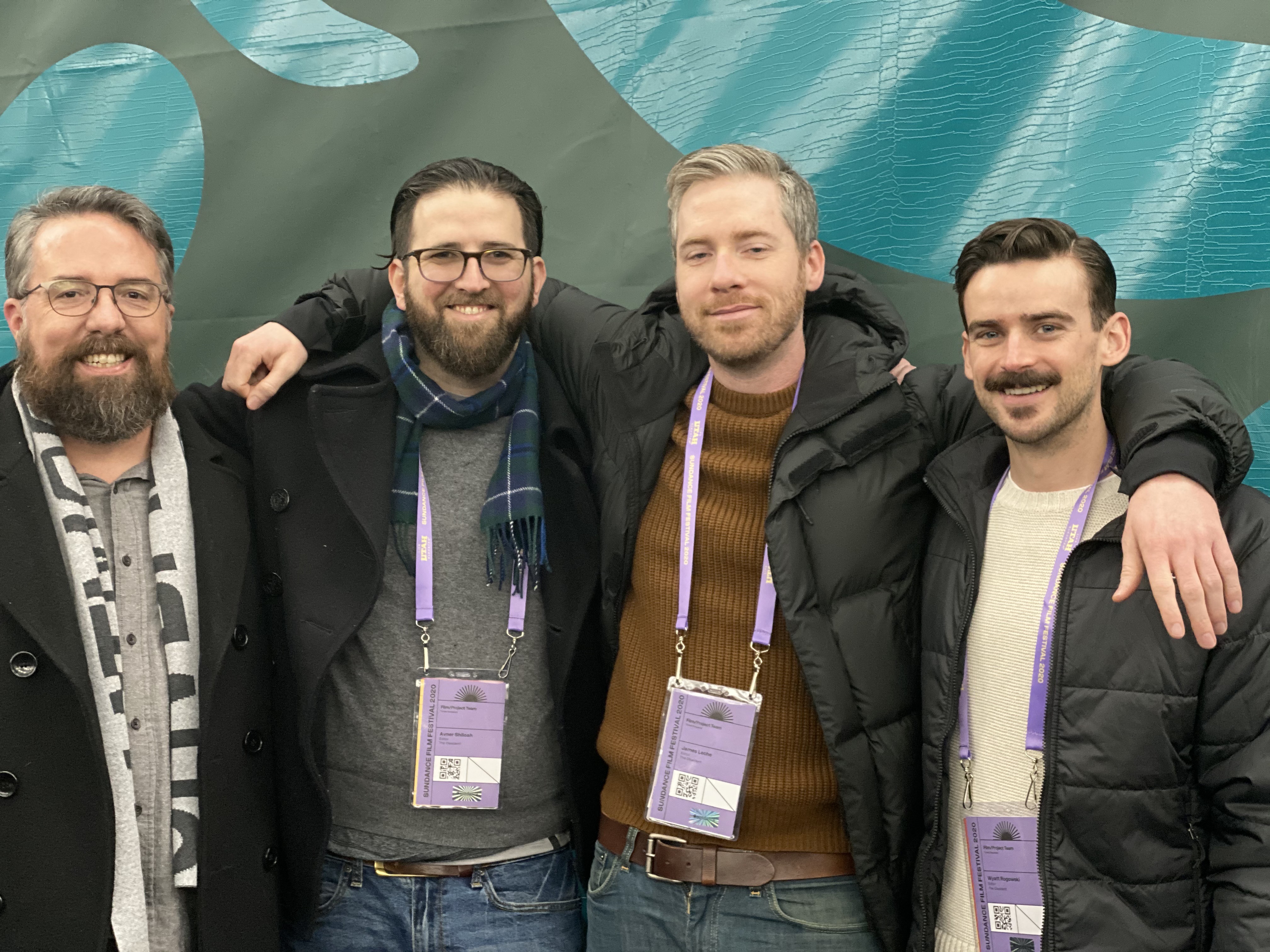
SHILOAH: Also, what you have to remember is that while we were editing this, Scott said James started in May and the rest of us started in June / July, they were still shooting while we were editing this. If you think about the Memorial for Jamal’s death that took place in October and we were in the midst of an edit about to submit to Sundance. For those kinds of instances, Brian would be out, in this case he was in Turkey shooting, so he wasn’t able to be in the office all the time just because production was going on. So, it was necessary to have that degree of trust for him with us and for us also to make sure that we are working in the spirit of what he’s trying to achieve. And again, whenever we could, we would present something to him in order to get his feedback. But because it was an ongoing production there was just a lot of that like, “okay, guys run with it and then show us what you got, and then we’ll take it from there.”
LECHE: I think I met Brian on a Sunday, got hired, started the following Monday, and then Brian was there that day and then he went to Istanbul for a month. So, like my first month in the Bay, it was all just emails. I was just getting familiar with things, but he was in and out of the country pretty consistently
HULLFISH: One of the things that I learned fairly early on from a documentary editor was that you could ask for stuff. I never thought about that. I always thought, “hey, the director delivers everything you need, and whatever you get, you get.” How much were you guys requesting things saying, “I need graphics of this. I need to visualize this moment. Can you get this for me?” How much going to the director was there?
HANSON: Well, the only thing I would say is, Wyatt and the others will have thoughts on this too, but editors were always ask for more footage of the city or a B roll or things that we can use for those kinds of purposes, but what really happened was we would go to our research team for archival and we really leaned on them; Asli, Dilara, Ibrahim, Amina, they were native speakers and they could search, whether it was Twitter or news archrivals or whatever, and we would explain, “Hey, we need to really try to convey this reality for that day,” or whatever given story point. And they could go dig and find the material to help clarify or tell that element that nobody explains in an interview or something to illustrate something that’s being talked about in an interview. And often they would come back to us with, “well, okay here’s what you’re asking for, but also here’s four other things that relate to it that we hadn’t even really considered yet because we didn’t know about them.” Having that research team was critical. I mean none of us speak Turkish or Arabic. So, we would have been certainly lost without them in that regard, but also in terms of mining the real world for more story material. They deserve huge credit for that.
ROGOWSKI: And Ibrahim would also, he was one of our Arabic researchers he would dive deep into Twitter and to all these different sites that obviously we didn’t really have access to because we didn’t speak the language, but he had a whole treasure trove and an archive that we could access. It was a lot of the stuff we found and some of the tweets that we featured in the graphics was thanks to his research. But as far as graphics cause obviously the first portion of any graphic when you have it on screen is just putting a slate down because you’re just trying to describe what’s happening just through texts. And it’s a process that I kind of just built over time of I would research on vimeo; I would just type in random keywords to find any type of visual that kind of had the same element to it, and I would pull from like 10 or 15 different visual effects clips on Vimeo or on YouTube or whatever, pull from all the different ones and try and make them unified in some type of way. But if it was just the emotion I was looking for or if it was the texture I was looking for somehow to convey exactly what we would then give to the graphics house, the office of development design who’s based in New York, they did a great job, and they would take it and then interpret it. And then with their animators, really hone in on exactly what we’re going for and then there’d be many cycles of notes and getting to the final product.
SHILOAH: The last part of that is also basically the actual footage that was shot by our DP, Jake Swantko and Brian. I think every time that we knew they were going on a shoot, we would go through and pass around a document of us making requests for the type of B roll that we need. Or they’re shooting with Omar, so like what we need them to do, what we need to see of him, whether it was scenes that we already had in place that we knew specifically. It’s like, “okay we need this very specific action.” Or there’s a very specific shot or detail or stuff that we thought could just be useful moving forward. As the guys insinuated earlier, I always requested more shots of birds that was just my little thing I just love bird shots. But there’s never enough, you’re always asking for more. I think it’s always a challenge because you want to say, “just get everything.” But unless you get very specific, they’re going to get lost and they have so much on their plate already and so much to do that we try to be as specific as we can just to help them out and figure out, “okay what should we focus on? What should we get more of?” So, I think it’s playing around with all of those different elements to try to achieve what we need. And that’s a great fortune of tackling a documentary that’s still being shot as you’re working on it. For sure.
HANSON: It allows you to replace a lot of stock footage too because we’d have some stock stuff that would be in as place holders like off of Getty or Shutter Stock or something. But because we would need more skyline shots of Istanbul, say, and they were going back and we’d say, “look, can we shoot our own versions of all this stuff? Maybe something a little more specific, a little more of a point of view, or a little more designed for what we wanted to do. Rather than stock footage, which is often shot fairly safely, fairly generically. Jake would add a little bit of a style and a stamp onto that footage that helped elevate everything.
LECHE: That’s true. One thing that was interesting: Jake would carry around this broken, was it a wine bottle? But he’d carry it around and he would like hold it as still as he could in front of the lens where you would get this really nice sort of like vignette almost, but more maybe like it’s cutting the image in half or something like that. I think if you watched there were areas that were just like out of focus and of an odd oblong. Yeah, it was a bottle he would just put in front of the camera at times as a stylistic choice. That was pretty interesting.
HULLFISH: I’ve got a DP that I work with a lot and he’s got a fragment of glass. It’s like a big chunky shard of clear glass that he uses all the time in front of the lens. It’s a cool technique. I noticed that there’s a bunch of shots that it looks like the image is smeared. Yeah, It’s beautiful.
SHILOAH: I think it’s really beautiful and it actually worked thematically with the film because so much in the film is about obscuring the truth. We weren’t so highfalutin about it. It definitely just felt right. The truth is obscured and we’re trying to reveal it and also there’s a suppression of speech. So, I think it was an instinct that Jake had that just seemed to really work and we all happily committed to it.
HULLFISH: Did you guys use, we already talked about Avid and the fact that you used a NEXIS, did you use PhraseFind or ScriptSync for this?
LECHE: Script Sync for sure.
ROGOWSKI: Script Sync. Yeah.
HANSON: It’s a must-have.
LECHE: Yeah, and the doc had just hundreds of hours of transcripts. When we got our initial Jamal talking head on camera, whether it’s like Saudi TV and he did a lot of Turkish TV actually too in America, wherever… we had that stuff translated and we had it synced. So I think we had almost 15 hours of just Jamal talking head stuff. ScriptSync’s invaluable.
SHILOAH: At this point, I almost find it impossible to work on a documentary without it. It’s why I will use Premiere for certain projects, but really tough with documentaries because Script Sync isn’t available. But it’s useful for us looking for things and also Mark our writer would write these paper cuts, basically. So, he goes through the transcripts and starts assembling lines in what people are saying, and sometimes he’ll take from different sentences just to make something a little clearer. And so for us to even find these different words, we couldn’t do that without Script Sync. It would just be basically impossible, definitely in the time that we had.
ROGOWSKI: It was interesting with our translators because, for instance something like the Turkish interviews, obviously we couldn’t use Script Sync directly with that with Turkish. So, there would be an English translation of it in the transcript, in Script Sync, and it would line up with basically subtitles, or like subtitled exports. That would be one of the video track, one of the video layers. And so you could go in and actually be going in the English script and then you could locate the exact bite in Turkish, and then we would work side by side with our translators and researchers and they would help us form the sentences, make sure all the punctuation was right. That was especially hard with different sentences trying to be combined, and if we needed to have more clarity like Avner was saying with certain sentences.
HULLFISH: So, I’m trying to understand with the stuff that was in Arabic or in Turkish, it was on the screen? Like how did you know? Was it audio underneath like a second audio track?
LECHE: In our ears, we had a translator who had been talking to Brian in the moment. So there was a guy who was talking to Brian during the interviews. He was translating everything. So there was an audio element. For picture, they put them actually in a timeline, the video in a timeline. It was usually the wide shot of the group clip, and they basically went through the whole thing and typed out subtitles. Then we exported that with subtitle burned in, then re-brought it into Avid and grouped that. So, we’d always have a visual representation of what they were saying on screen. It wasn’t perfect, but there’s no other way really to figure out what they’re saying. And yeah, after we put together a sentence or after we put together a bite, and this was the thing that confused me about Turkish is, they end their sentences with the verb. So, in conversational Turkish, I think you understand it very clearly, what everybody’s saying or whatever, but if you’re trying to be accurate, you have to wait for them to say that final verb. And the way they say the verb, like my instinct, is to cut right before they say the verb because it feels like the sentence is over and then they come back with this verb and I’m just like, “Oh man I wish I could just end it right here because his inflection feels like the end of a sentence, but no I got to wait for that verb.”
HULLFISH: That’s so interesting.
SHILOAH: Sorry, just to clarify the point that is, just because Script Sync has to work with audio and obviously it can’t work with Turkish audio, what would be actually ScriptSync’d would be the translator’s audio feed. And sometimes that wasn’t an accurate translation because that’s happening on the fly. And those subtitles that we had were also subtitling a lot of times of what was being said in the Script Sync by the translator. So, it was a lot of work afterward, but Script Sync had to basically start out with the translator’s audio who was on the scene.
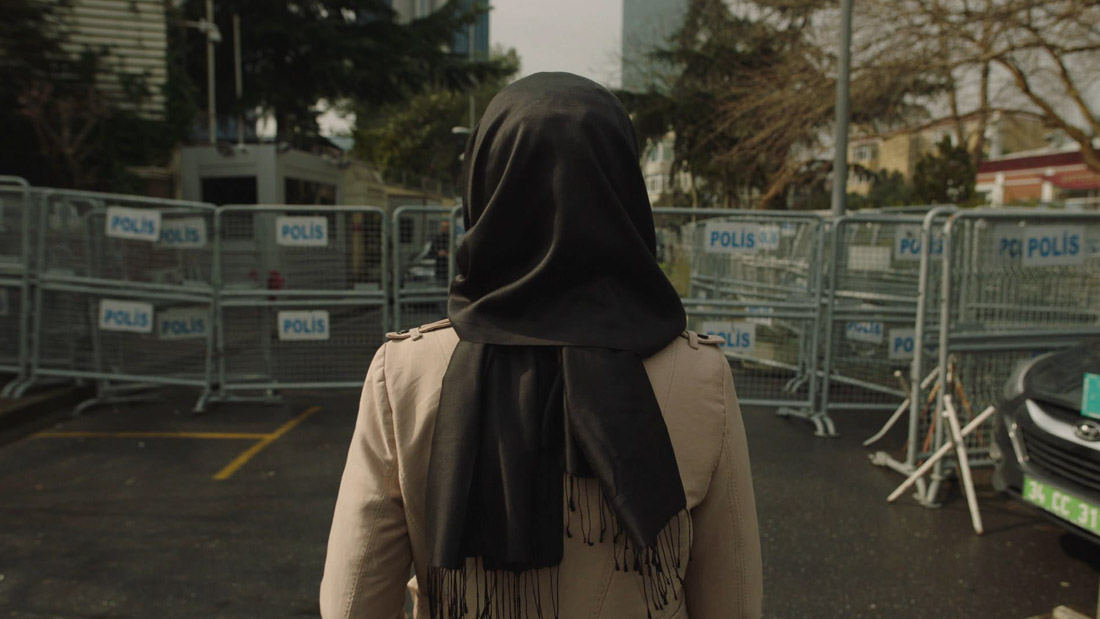 LECHE: Yeah, it was a refining process. And ScriptSync also has this ability for you, towards the end we got a little better at it, but you can physically add a node. So, depending on how specific you want to get, you can add a node to every line in a script, but we were just doing it by paragraph really just to save everybody a headache, and then we would look at the subtitles and stuff like that and try and go from there.
LECHE: Yeah, it was a refining process. And ScriptSync also has this ability for you, towards the end we got a little better at it, but you can physically add a node. So, depending on how specific you want to get, you can add a node to every line in a script, but we were just doing it by paragraph really just to save everybody a headache, and then we would look at the subtitles and stuff like that and try and go from there.
HULLFISH: Got it. I noticed some transitions were done with some sound effects. Was that something you guys were using in your picture cut or that was completely on the sound guys?
ROGOWSKI: Are you talking about the glitches?
HULLFISH: Glitches, but I mean even like almost a “Law and Order” kind of sound on a transition. I thought I heard some of those. I might be mistaken.
ROGOWSKI: Yeah, I think probably a majority of those were done in the edit and then were just embellished in sound in the end.
SHILOAH: I think when I started out editing, I imagined that a lot of it was being done in the sound mix, and then as I’ve gone through the years I found that really it’s necessary for us to sound design a lot in the picture edit in order to make it come alive, doubly so in documentaries in a way because there are a lot more of those stylistic flourishes to it. And it’s such a beast for the sound mixers to tackle so we want them to be able to be creative with it and add their own, but we just need to give them a really strong guide to build upon and be like, “this is what we’re going for. Now you can make it better.” At the same time, also have it there for the director and the producers, or if we’re doing a test screening, we just can’t leave too much to the imagination. We have to make the scene come alive and be as strong as it can be for an offline edit.
LECHE: Yeah, in my experience we don’t have any money in docs so we don’t get to spend a month in sound at the end. If you’re lucky, you get a week. Sound design is a luxury but really it’s just sound mix, and it’s really fixing problems most of the time. And then a week for color. In my experience, that’s usually my post schedule. So, everything pretty much has to be in there, unless you have something very specific in mind and you’re like, “we can’t create this on our own. Somebody else is going to have to manufacture some sort of design for this.”
HULLFISH: While we’re talking about design, I just want to hear all of your thoughts on the value of sound design in making something come alive. Like I remember the first time that you guys went to Montreal, there was just probably a stock shot of the Montreal skyline, a drone shot, but there’s a siren underneath or there’s something that makes it feel like it’s alive.
LECHE: I think that was actually just sound that was in. We use a lot of our production audio that’s been shot around the city and stuff like that. Like drones generally don’t capture audio, that I know, but we had a lot of Omar walking around and in Montreal and stuff like that. So, we probably just pulled that siren from that area of the city just to give it some texture.
HANSON: I think you’re always looking for opportunities to use sound, whether it be music or sound effects or sound design, to cue the audience a little bit emotionally. In the opening when Omar’s walking to the train station, we’re in a city… Are we anxious? Are we relaxed? Are we excited? What is the mood? What is the tone? And in this movie certainly, there are almost zero smiles or comedy aside from maybe the cat jumping in his lap. You want to create that environment. And if you can do it subtly with maybe a distant siren, or you can heighten the transition from outside to inside the train station when he pushes open the door, or whatever you can do to sort of heighten things and amplify. Whether it be a contrast of environments or a shift in what’s happening in the story, you can support the intention of the scene or the intention of the sequence, and if you can do that in a way that isn’t heavy-handed and overt, I think you can really make a better audience experience at that moment.
SHILOAH: Yeah, it’s about making it feel realistic. Is it putting the audience in a time and place as well as, exactly what Scott said, which is using the most subtle and subconscious signifiers to tell the audience that maybe they should feel a little scared or a little paranoid or someone’s after them. It’s nothing that’s literal. It’s nothing that’s overt. It serves those two purposes of just, A: being realistic and putting you in a time and place, and B: giving those little signifiers to make the audience feel something.
ROGOWSKI: And I also think just to propel the audience. The tension and the pace even when you don’t have the music. It’s like when you can build this sound bed and it can transition into the next shot without even music you’re feeling and you’re going with the pace of the film even more.
LECHE: Yeah, I think sound really helps connect you to a shot, and the faster you can connect the audience to the shot, like a fast-paced scene even without music, is really helpful in storytelling.
HULLFISH: Tell me a little bit about music since it just sounded like we were going there. What did you guys temp with? What was the thought process? How do you feel about temp in a documentary?
LECHE: We were really given pretty much at the beginning as much latitude as we wanted and throughout really. Adam Peters, the composer, was always slated to do the movie so he actually handed over a lot of his other film scores to sort of let us play with. And he would give us like, “this could be cool. This could be cool.” Stuff like that. But, yeah I’m not sure the nature of the beast when you’re building and you don’t have a composer on from the beginning. You just have to create the world yourself create that landscape and then go from there.
HANSON: I mean the purist would say, ” it’s gotta work dry. If it doesn’t work dry, then you don’t want to use music as a crutch. You want to make sure the scene plays well.” And I think that’s a great way to start, but then you get into a reality where you’re going to be sharing this cut with an audience. And maybe early on with fellow filmmakers, but later on it’s not. It’s friends and family or people that don’t work in the industry, and you want to give them as complete an experience as possible. So, temping has become a necessary part of the process especially if you want to know if you’re getting the emotion across, and obviously, music is a great guide for emotion. And if it’s working or not working or if you want to counter score or support or all those choices… the earlier you can explore some of those choices, again on a tight schedule, gives the composer a clearer target of where you’re going. You don’t want to do the thing where you pull a bunch of soundtrack cues from all these other composers and say, “recreate all of this.” You want to use them to their strength. And so having those tracks from Adam certainly helps, but I’m sure we pulled from various soundtracks to fill it out.
SHILOAH: Yeah, those soundtracks from Adam plus demos that he gave us, he would just have sometimes these sketches or things that he hadn’t used in other soundtracks that he was working on, those were really helpful for him as well just because I think for a composer it’s always easier to develop their own things than have to go off of someone else’s music. At the same time, as James and Scott said, it’s kind of a necessity. There’s really no way to do it without it, unless your composer is constantly there from day one and scoring scenes as you edit them.
And so I think, for us as editors, that separation is a little bit more clear. We know that we’re using this in order to set a tone and emotion. That’s what it’s there for, and we don’t necessarily fall in love with the temp. We want the composer to do their own thing. I think in that sense we also try to talk to them in the language of emotion instead of the language of instrumentation, and specifically these notes and, “go in a major” or “minor.” It’s like I think we usually try to talk more in the sense of, “this is what this scene is trying to achieve. This is what this character is going through” And so, it’s a very useful tool to use temp music, but it is a double-edged sword. And I think that sometimes a director could fall in love with a temp and that’s very risky obviously because when you’re using a temp that’s also a finished cue that appeared in a film that was already mixed and made perfect after it’s gone through so many revisions but when you’re developing a score, you get a sketch and it’s not quite right so you need to keep developing it and you have to work with a composer to achieve that final result without referencing the temp too much. So personally, I’ve been fortunate to work with composers who understand that or appreciate that. Obviously, it’s a little bit easier for them if you’re also not pulling from tons of different scores and going all over the place in terms of style and tone because that starts making it difficult as well. But it’s almost like a necessary evil that’s still kind of fun to do at the same time because you are scoring it with other music, and if you like working with music that’s a very gratifying part of the process. I think James worked very closely with Adam and he can attest to that, where it was also just very pleasurable to work with him and figure out some of those nuances with his own music.
LECHE: One small thing just to add to that: I think working with a director like Brian, music is very important for him to understand the scene and to get what he wants out of it, for it to be approved. He’s so based in the tension and the drive and the emotion of the scene that finding the right, not necessarily instrumentation, but finding the right emotion from a slew of different soundtracks is more important than other directors I’ve worked with.
 HULLFISH: Do you use temp differently or do you use score differently in a documentary than in a feature? I know a lot of feature editors even say they don’t want to lead the audience. You don’t want to over-rely on music. Is that even more so in a documentary?
HULLFISH: Do you use temp differently or do you use score differently in a documentary than in a feature? I know a lot of feature editors even say they don’t want to lead the audience. You don’t want to over-rely on music. Is that even more so in a documentary?
HANSON: I think there’s certainly a sensitivity to you don’t want to get the sense that you’re using music to manipulate the audience or to push an agenda. In the documentary world, you want to be very true to what happened. And while you are trying to tell an engaging, entertaining story, and music certainly helps you do that, you don’t want it to be on the front foot and be the thing leading the story. You don’t need music to tell you that the guy getting dismembered and burned in that embassy is tragic. You don’t need music to tell you that. In fact, some of those stretches in that part of the movie, it’s silence. But you do want to let the audience know that like, “hey, we’re shifting gears here. We just left a story about romance and now we’re going to go back to the crime scene. We’re making a turn here emotionally.” So, that I think is a good use of, I don’t want to say guiding the audience but sort of…
HULLFISH: It helps the audience get their bearings.
HANSON: And get ready for this change. Yeah. We’re going to change the subject. And so I think that as much as seeing different characters and or taking a breath to let the audience process and smoothing the gaps as you would, I think that’s where it’s most valuable.
ROGOWSKI: And there’s also a scene in the middle of the film where we kind of intercut going back and forth between Omar and Hatice, and also, we have some of the investigations there as well, but in the temp, it was very much a very hard temp to find because you have the same song with kind of like a major chord and then going down to a minor chord, and it went back and forth and back and forth. And whenever with Hatice we’re in the major. With Omar, in the minor. And it kind of shifted into a happy… with talking about the marriage. And then dark talking about fighting back against the Saudi trolls. So, that was an interesting thing. Especially, I think Adam did a really good job in replacing that.
SHILOAH: And going back to the narrative comparison, I think that if a narrative and the scripted narrative feature is done well, obviously then everything within a given scene is designed to evoke a certain tone. So, it starts with the script, the way it’s shot, the way the performances are, and then finalized in the edit. And so you have all these disparate elements working together to create that. And so music is one of those elements but it’s not always needed, and it doesn’t need to lead you It’s there to enhance. And with documentary, I agree, we try not to overdo it and not to lead or manipulate the audience. At the same time, you’re assembling a story and you are in the edit really focusing on what the tone is. And so sometimes you’re forced to use that as a more dominant element than you would in a narrative feature because you don’t necessarily have all of those other tools in your arsenal. So you try not to overuse it. You try not to have it lead. You avoid manipulation at all costs, of course, but it is sometimes a little bit more necessary than a narrative feature would call for.
HULLFISH: Wyatt mentioned inter-cutting, and that’s one of the things that I wanted to talk about because it just fascinates me when you have two stories or sometimes even three stories that you’re cutting back and forth between when you choose to make that jump. Can you guys talk to me about, for some of those things, how long you stay with Omar? How long you stay with the fiancé? How long you stay with a story of the bees or the flies or whatever it was? Both, right? How are you deciding when to cut in and out of those stories?
HANSON: There was a natural point where we knew they were all going to come together, and that was October 2nd, the day of the killing. That’s the day that the bees have their successful moment. It’s the day that Jamal was killed. And so, you know where you’re going, and that helps enormously because that run to the sort of climax of the film, knowing where you’re heading, obviously, it helps you set out and back out from there to find, ” so now where does this story start? Where does that story start? Okay, the natural terms in story A and B and C.” And then it becomes a rhythm and a timing thing, I think “okay, yes. This piece of information, this piece of information, this piece of information…” But by the time you’re at this point in the story, it’s more about this emotional investment, this character that you’re concerned about, this emotional investment, and just trying to ride that wave so that they all come together at that same moment. That’s my answer to that. I think James and others may have different opinions about it, but that’s mine.
ROGOWSKI: That scene was a perfect storm. We call it the perfect storm in the edit. We call that scene a perfect storm because of the climax of all these stories just colliding together; like the happiest point of Jamal and Hatice just getting their apartment and going to get their marriage license, and then the happiest moment of Omar and Jamal too, and the bees finally getting their first victory against the Saudi trolls, and then the climax and victory of them capturing Jamal and killing him all at one time. And it’s interesting how the October 2nd kind of repeated itself a couple of times throughout the film. At the very beginning of the film, we featured Jamal being killed, and then we go into the lead up to it but we don’t go into October 2nd in the middle of the film, that kind of is a nice big climax there, and then at the very end of the film we go deep inside the actual room and the transcript of the killing. I think that the structure worked out really well, and I think that’s thanks to the four of us and Mark and Brian all kind of putting our heads together and figuring out a good structure.
LECHE: Yeah, it’s complex, the story, because we tell it from various angles and various timeframes. You’re starting three months after the murder, then you’re immediately going to the murder, and then you’re telling a little bit of the backstory of the guy who you just met, and you go into the Arab spring, and you go way back in time and you talk about Jamal’s rise in his world and stuff like that. It’s a lot of weaving. And I guess the thing that I would say really helped make that work was just context. It’s like where I am, what do I need to know about what’s coming next, and keeping the audience intrigued. And as those things started to feel right, I really feel like the structure started to feel right. “I kinda wanna know a little bit more about this Omar character. Like why did he leave Saudi Arabia?” We can’t hold that down the line. We need to get to that here, but we can’t hang on it too long because we need to know this next beat about Jamal that’s coming up, or the investigation itself that’s coming up. Keeping all those buoys afloat was pretty complex, I think particularly for this movie. I’m generally a person like, “let’s see what it looks like linear.” A follows B, you know, and then that makes sense. But this one, from the get-go I think we knew that we weren’t going to be able to do a linear story
SHILOAH: And I think that everybody touched upon this where they mentioned that at some point it starts feeling right. And I think that’s an important thing to remember is that: at the end of the day, it’s mostly about instinct in terms of when you switch from one thing to the other. I think, as James said, the context is extremely important in terms of how long we actually stay in a scene or when we decide to cut to this different beat. That all really boils down to instinct to pacing. Like Scott said, it’s something that you just feel and it feels right. And I think it’s always important to be able to intellectually justify it to yourself and to others, but I think that initial decision is always based more on emotion and instinct and then you just have to be able to explain it. In a way it’s summed up that way where it’s like, “okay, does this feel right? Or it doesn’t feel right. I’m getting bored. We need to switch. Let’s find a way to condense what we already have because this is just dragging too long. And I need to go back to Omar at this point because it’s been too long since I’ve seen him.”
LECHE: I’ve never cut a feature or worked on a feature film at all. I’ve been in documentary since I got out here since it’s what I always wanted to do. I just always feel like with documentaries, especially when you’re telling a story like this one you know where you’re going, you know what you’re doing, in storytelling and documentary it’s ’cause you’re creating everything from scratch really, like just throwing the spaghetti at the wall and waiting until something sticks. And then you’re like, “Oh. That worked. Oh, let’s try that again over here like that.” And then you start to build this base of the language of the film, I guess I would say, just like how we’re going to tell the story.
ROGOWSKI: Also, what James said earlier, I think our hand was almost forced in the beginning of the format of storytelling going back and forth cause we’re showing these vérité moments in the moment with Omar and Hatice. And at the same time, we’re telling this vast backstory of this guy who has already died. So, it’s like we kind of had to go back and forth. And so from day one we kind of had that in the back of our heads.
HULLFISH: Now that you guys mentioned it, the structure is really pretty complex as far as not being linear. It goes all over the place, and I love that explanation that it’s: what do I need to know to understand the next thing?
There’s a lot of graphic stuff. There’s Twitter explanations of things that were going on Twitter. There’s the whole bees thing. Where you guys doing placeholders? How are you building that before you had the graphics?
ROGOWSKI: So yeah it was, like I was mentioned earlier, a lot of it was at first just you have your bed of just sound soundbites. And how, like with the bees and the flies, the audience has to understand exactly how this whole operation works. So, you just have your radio cut of what it’s going to be, and off of that just text slates saying this is what’s happening on screen. And from there I would sometimes just go into After Effects and build little 3d models of how I want the shot to be blocked with the bees and the flies colliding and stuff. And it would be super, super rough, but it’d be enough for [LBD] to take this information and run with it. And also we had a really talented freelancer who helped us out and did a lot of the design and the animation itself, Mohammed. And basically after that, then it was transferred to the office of development and design to do all the lighting, texturing and compositing. But it was just a process. It took a long time, many iterations. And for Omar to be very succinct and very clear in what he’s saying cause he would go off on tangents on what the bees and the flies do, so you have to make it very clear. And so, there are multiple interviews or we’re having Brian and our DP Jake go back and try and get some of these sound bites and ask questions that the whole explanation will be succinct and very easy to understand. So it was a combination of a bunch of things.
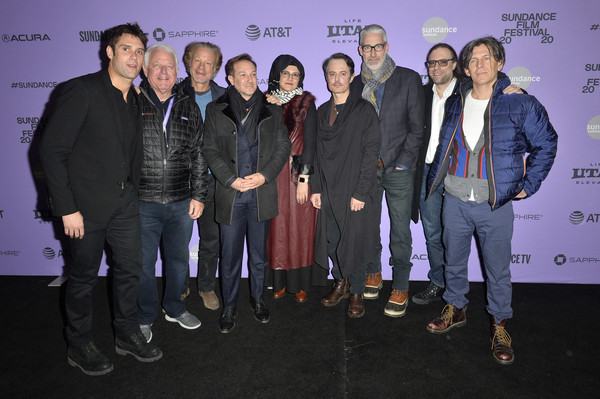 HULLFISH: One of the things that I struggled with in past documentary editing that I’ve done, and I would love some advice from you guys, is you don’t want the story to be too long, obviously. There’s a point where you’re just like, “I’m bored. Let’s get this thing over with,” even if you don’t have an actual time deadline. We can’t go past two hours or 80 minutes whatever it is. But I felt like this documentary was very beautifully paced. There were spaces where you just looked at birds like you said, “Oh here’s a shot of birds.” And we don’t hear any dialogue, we just watch some birds go by or a beautiful shot of Istanbul. How do you balance that? Or how do you make sure that those moments don’t disappear when you’re trying to tighten things up? Because the easiest thing to do to tighten this documentary up is like, “let’s kill all those moments. Nothing’s happening. Let’s go. Just chop them out.” I’d love to have a conversation about
HULLFISH: One of the things that I struggled with in past documentary editing that I’ve done, and I would love some advice from you guys, is you don’t want the story to be too long, obviously. There’s a point where you’re just like, “I’m bored. Let’s get this thing over with,” even if you don’t have an actual time deadline. We can’t go past two hours or 80 minutes whatever it is. But I felt like this documentary was very beautifully paced. There were spaces where you just looked at birds like you said, “Oh here’s a shot of birds.” And we don’t hear any dialogue, we just watch some birds go by or a beautiful shot of Istanbul. How do you balance that? Or how do you make sure that those moments don’t disappear when you’re trying to tighten things up? Because the easiest thing to do to tighten this documentary up is like, “let’s kill all those moments. Nothing’s happening. Let’s go. Just chop them out.” I’d love to have a conversation about
LECHE: A lot of those moments I feel like fall on the end of things where I think you really want the audience to digest what they’ve just experienced and it’s difficult to know… I mean you just have to go off of your own instinct and kind of try and remove yourself from, “I’ve seen this a thousand times,” and be like, “how long does it feel like that emotion just hit me? And I can hold for a breath and begin to reset the audience into a new storyline or a new scene or whatever.” So, some of that was based on that, and I think kind of necessary in just that sense.
SHILOAH: Yeah, I agree with what James said exactly. I think with storytelling in any format, I mean whether it’s documentary or whether you’re doing a narrative as well, I think that your first and foremost obligation is to engage the audience and to help them, as James said, digest what you’re trying to communicate. And so when you’re talking about documentaries, I think that there’s, even more so when you’re talking about in an activist documentary like this, there’s a larger issue of freedom of speech and this horrible injustice that was done. So, you have an obligation to the truth. You have an obligation to the victims. You have an obligation to the people who were involved. And you have an obligation to this topic that you’re trying to communicate to an audience.
And I think that You can have that instinct of, ” okay, well we need to tell the audience about all these different things and go down all these rabbit holes. And everything is important.” And it’s true that everything is important, but at some point if you go down too many of these rabbit holes or if you suck out some of that air that you mentioned, if you take out some of the more emotional and relatable moments where the audience can breathe, you actually end up doing a disservice to the subject and to what you’re trying to talk about because the best thing that you can do to do justice for Jamal is to tell the best story that you can rather than be like, “well we didn’t include that detail, and we didn’t include that, and you know what the movie is too long because of these moments where you breathe.” But it’s not true. The movie would feel longer if it was five minutes shorter, but there weren’t any of those moments. And the audience would get bored and the audience would not be as engaged, and thus what you’re trying to tell them isn’t going to really sink in. So, I think those are really important tools, and it’s ultimately the best way to really service the cause of your film and the story that you’re trying to tell.
HULLFISH: What were some of those rabbit holes, that’s a bad word for them, but you’ve got a ton of story elements that you had to juggle and decide whether they were in. You chose to keep a bunch. And I thought it was a really interesting story point, but the whole TV station that Jamal starts and only lasts for a day, could that have gone? Did it have to stay? How did you make those determinations of the things that didn’t make it to the film and the things that did make it to the film?
ROGOWSKI: I think one of the biggest things that we struggle with, including seeing what we could cut off, was the Arab spring because there are entire documentaries just about the Arab spring. And it used to be a sequence that was like 12 to 15 minutes. I think it was cut down to around like 3 or 5 and we had to distill it down to what is really the importance of this in relation to Jamal. And it was the fact that it really inspired him to see a broader view of democracy within the region. And that happened in Egypt, in Cairo in 2011. And so focusing on that point and then just getting the audience caught up with just a few small points, and then remembering the term Arab spring and kind of getting to that final point.
But as far as the TV show, we did struggle with putting that in or taking it out and putting it in much earlier cause it does come in at the very end of the film. And I think one of the reasons, because Mark was very sure of keeping it at the end, and I think because it related to Omar’s trajectory and it related to how Jamal had this dream that was even bigger than the bees and the flies. It was having a TV channel within the region which could bring any type of person on. It wouldn’t be restricted in any way as far as freedom of speech. And then that kind of led directly into Omar’s story which continued with him starting his own big official TV or YouTube channel. And so those storylines were parallel in the end.
SHILOAH: That’s a great example of something that is a detail. It is kind of like, “wait, what?” It’s a different topic, but it has emotional resonance because it directly relates to Omar’s story. And so that has to stay. At the same time, an example of something that we cut down on was Pegasus, the software that’s used to hack Omar’s phone. And I still feel like we spend a nice amount of time on it as we should, but I remember doing a first pass on it and it had a lot more about the Israeli government and the role that it plays in selling that software and approving those sales and the corrupt element of it. And I’m personally from Israel so that was very dear to my heart. I’m all about exposing Israeli corruption. So, our first version did have more. It had the prime minister talking and had all these different elements, and at the end of the day it’s, ” okay. This is infuriating stuff. This is awful. This is shocking. All of that.” But how much of it is really serving the overall story and Jamal’s story? And so what became important about Pegasus was to explain the mechanics of it to show the direct impact it had on Jamal and on Omar and the role that it played in his death which is really the most important thing. And then if you’re talking about an extra detail, then really it was bringing in Jeff Bezos into the story. But that also served a very important purpose in the sense that it made it much more tangible for the audience because here’s a name that they know, who they know is one of the richest people in the world; and if it can happen to him, it can happen to anyone. And so even though that seems like it might be a rabbit hole, it’s something that is very engaging for the audience and they really respond to and they find it very shocking. And so that was, “okay, that’s got to stay.” And I think everywhere throughout the film… I mean you talked to Brian. Brian is so passionate, and he studies everything about these stories, and at first he wants everything be in there but even he realizes that it’s, “okay well, we’re detracting from the story by going down too many of these avenues.” And so, the entire film is like that. It’s a game of whittling it down. What is the essence of this? What do we need to know? And what is actually emotionally impacting our or subjects and thus the audience as well?
HULLFISH: Did you guys do screeners for outside people that kept you objective?
LECHE: Yeah, we had several. I want to say three screenings where we actually rented out a little theater or an agency. Someone’s agent [copy] on the screen.
ROGOWSKI: UTA.
LECHE: UTA, yeah. At some of them there were 150 people. Like a regular theater screening. So yeah, and then we have questionnaires. We had the whole thing.
SHILOAH: Very, very important part of process for sure.
LECHE: Yeah.
SHILOAH: Very informative. Very insightful. I mean, the questionnaires are usually important, but even just sitting in that room and feeling the audience around you and how they respond. In this situation it’s not laughs. You’re not getting laughs, too many at least, but you can pick up on what they’re feeling and how they’re responding to things even if they’re not always audible. It’s such a different experience to see how it plays when there’s an audience around you.
ROGOWSKI: The one laugh we always got which was in the history section when there was an archival bite that said how the King had 37 sons or something like that, and that’s what everyone in the audience was like, “Oh my God,” and chuckles throughout because it’s like 37 sons.
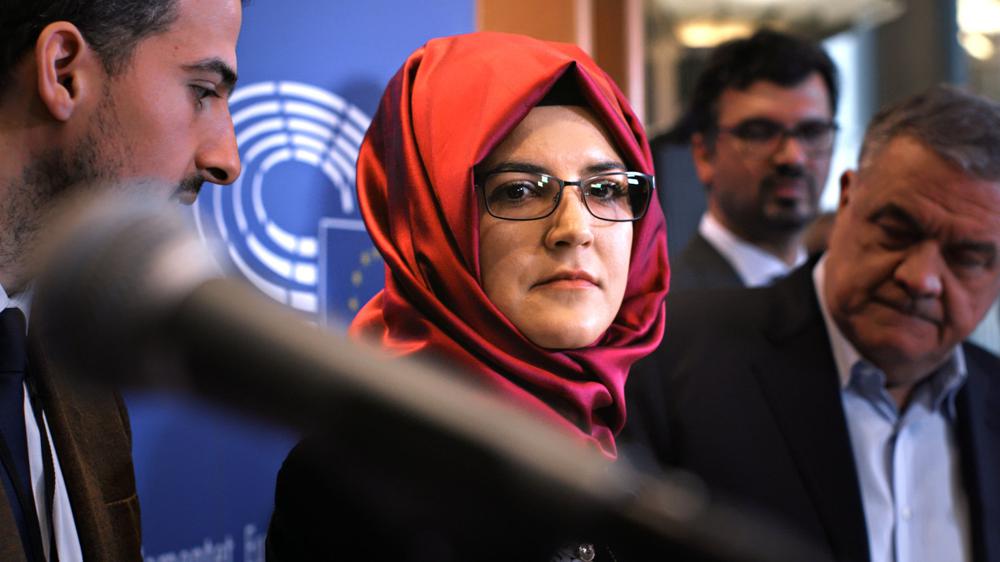 SHILOAH: Always a laugh.
SHILOAH: Always a laugh.
LECHE: Like the screening process for you, is that like the most nerve-wracking that you have for a… I don’t know, like for our process I know a lot of the times we’re literally exporting it the day of the screening. [Feed] in the avid, and the file hasn’t been QC’d or something like that. For me, it’s like the most nerve-wracking. You don’t know what the theater’s going to sound like…
HULLFISH: Yeah, and multiple people I’ve interviewed have said the same thing. On a feature or a documentary, but on a feature you’re exporting it, you haven’t QC’d things or you’re right up to delivering and it’s always a panic.
I’ve kept you guys quite a while. I wanted to ask one more question about, it’s a style thing and I’m not criticizing in any way, but I really enjoyed there’s a technique that was used on a couple of the early interviews to introduce the interviewee where they would be speaking and non-synced you would see them just looking at the camera even though they were speaking. But then in other interviews you didn’t do that. Was there a decision about: we’re going to use this three or four times but not every time? Or did it just work well in some instances and other instances it couldn’t work?
LECHE: know that when it worked, it worked. I know it felt good, and you don’t want it to become like a repeating pattern throughout the entire film where every time you meet somebody new, they’re doing the same thing. But the portrait shot intro is a nice way to add a little bit of weight to the character, a little bit of gravity to the person, or something like that. But yeah, I don’t know that… did we have a conscious sort of conversation about that?
ROGOWSKI: I think some of the main ones that I remember were because we didn’t have enough time for the subtitle to come up. And it was just a matter of reading their lower third before the subtitle comes up, and just having a little bit of breath. I know for Wadah, that was one…
LECHE: Prosecutor too.
ROGOWSKI: Prosecutor.
HANSON: Turkish prosecutor and the police inspector.
ROGOWSKI: Yeah. So I think that was the main reason why.
SHILOAH: Yeah. Necessity…
HULLFISH: Necessity is the mother of invention.
SHILOAH: Exactly. I mean some of the proudest moments come out of that. It’s always problem-solving is the best way to be creative.
HULLFISH: I love it. Is there anything that I haven’t talked about that you guys want people to know about the editing of the film? Or is there something I haven’t touched on and you’re like, “Oh here’s a cool thing that
HANSON: Every editor always likes to give credit to their assists and to the research team, but the level of complication… We had two assistant editors that were there for the majority of the run, Lauren Brinkman and Crystal Pastis. And they ended up acting as sort of the hub for everything. When someone from the research team was translating the interview and doing the subtitles and all that sort of stuff, they were QC’ing that before it got passed on to us. And then they were taking stuff from us and redistributing it to the research team or whatever. Managing and assisting four editors, that’s a task enough, let alone in two other languages that none of us speak without the help of our research team and all of their work, there really was an enormous amount of work to do for a very complicated story. I know it’s everyone likes to say that because you’re supposed to thank this team, but it does not happen… This movie does not happen without those folks. I can’t say enough about them. Cause we were able to just edit.
ROGOWSKI: Exactly.
HANSON: Normally on a doc or an indie you’re bootstrapping a lot of things and DIY’ing solutions, and to have that many people was frankly a luxury, but a necessity with the amount of work that we had to do. I can’t say enough about them.
SHILOAH: The coordinating with the graphics department as well, which Wyatt was in charge of, but they were constantly shuttling things back and forth, dealing with archival as well. Most of that fell on their shoulders too, was managing that and acquiring that. I mean, they did so much it was… yeah I agree with Scott. We can’t really say enough about what they contributed. And plus, I mean both them and both Lauren and Crystal as well as our researchers, which Scott mentioned, Asli, Dilara, Ibrahim, and Amina, we’re also creative voices. We would talk to them – people who were from the region or just had different points of view. I mean, they were always involved and very hard-working, and it was a Herculean effort for sure.
HULLFISH: Guys, thank you so much for your time today.
LECHE: Thank you.
ROGOWSKI: I appreciate it. Thank you.
SHILOAH: Thanks, Steve. This was fun.
HANSON: Yeah, thanks for having us ’cause I’m a fan of Art of the Cut. I read all of them. I look forward to seeing this one come out.
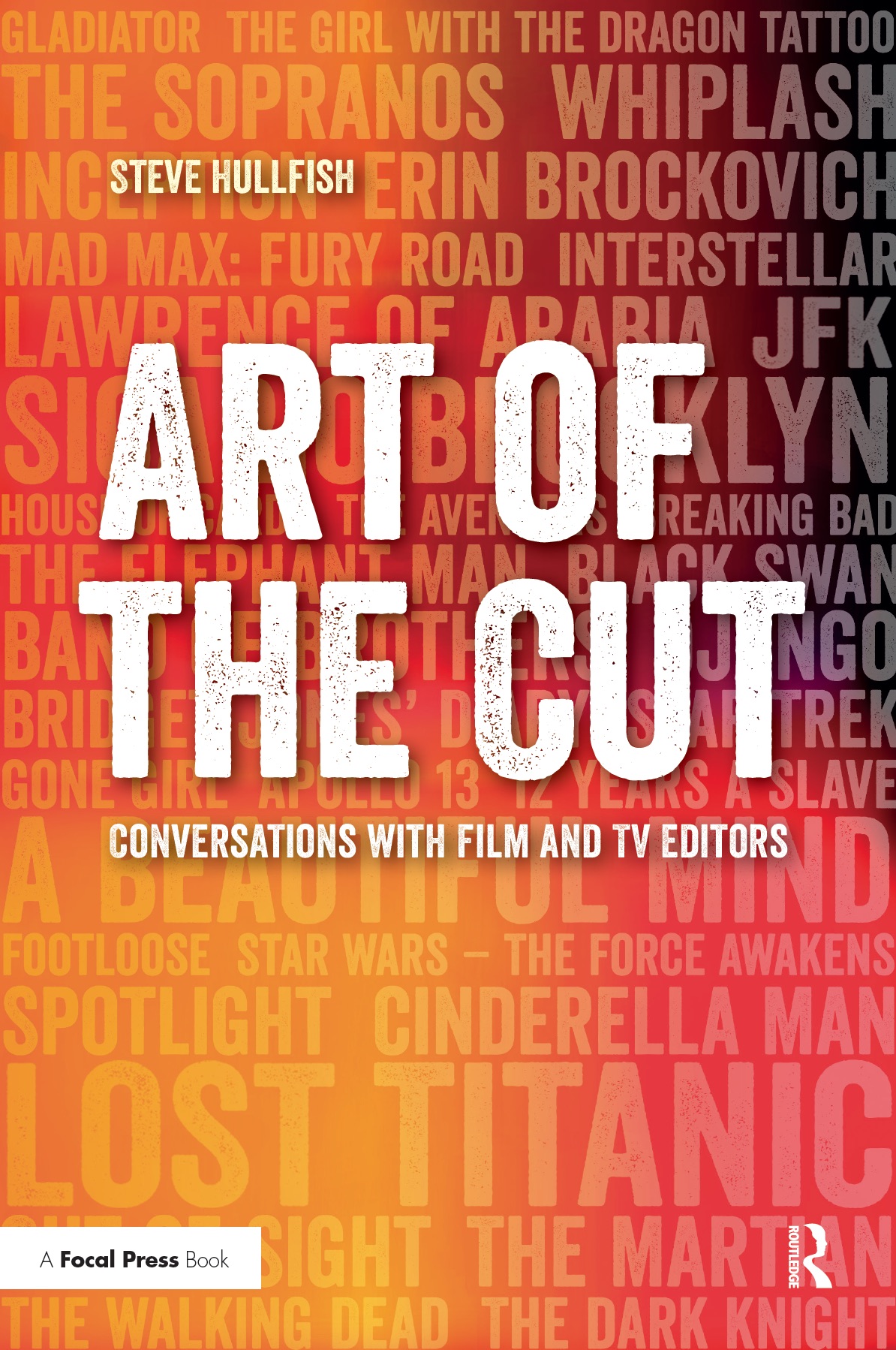 To read more interviews in the Art of the Cut series, check out THIS LINK and follow me on Twitter @stevehullfish or on imdb.
To read more interviews in the Art of the Cut series, check out THIS LINK and follow me on Twitter @stevehullfish or on imdb.
The first 50 interviews in the series provided the material for the book, “Art of the Cut: Conversations with Film and TV Editors.” This is a unique book that breaks down interviews with many of the world’s best editors and organizes it into a virtual roundtable discussion centering on the topics editors care about. It is a powerful tool for experienced and aspiring editors alike. Cinemontage and CinemaEditor magazine both gave it rave reviews. No other book provides the breadth of opinion and experience. Combined, the editors featured in the book have edited for over 1,000 years on many of the most iconic, critically acclaimed, and biggest box office hits in the history of cinema.

Filmtools
Filmmakers go-to destination for pre-production, production & post production equipment!
Shop Now